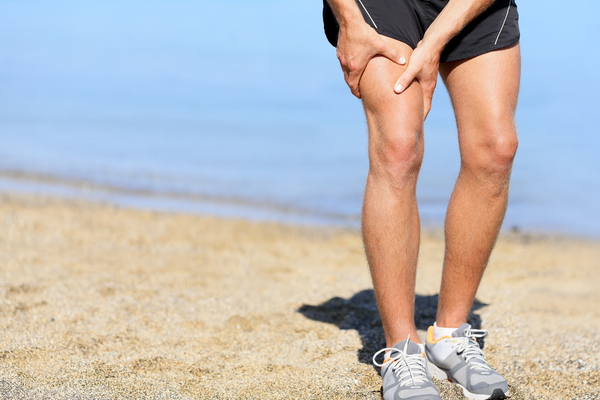
Let’s say you are an avid runner and you start to have pain on the out side of your leg when you run, cycle or hike. What could it be? What it can commonly arise from is a chronic injury known as Iliotibial band syndrome (known as IT band syndrome).
Before we get into the reasons of why IT band syndrome takes place, let’s discuss a blurb of anatomy. Your IT band, known as your iliotibial band is a tendon that runs down the outside of your leg from your hip to the top part of your shin and helps to stabilize your knee. As your runs down your thigh, the band begins to narrow towards the knee and if it’s tight, it can rub back and forth along a bump of bone on the side of your knee called the lateral epicondyle. This is repetitive rubbing back and forth is considered overuse injury commonly found in runners when their heel strikes the ground, cyclists and hikers when they flex their knee stepping forward. Additionally, there other various causes to this injury can arise from wearing old shoes, running down hill, on uneven surfaces, and just running a lot of miles.
Over time, this can cause irritation and pain to that area. Pain may be felt bending and straightening the leg, which can get worse if you try to keep trying to push through it. At this point, your mentality is, “I can get through this.” Truthfully you are doing more harm than good to your knee.
So why does this pain happen? This pain can happen from what’s known as muscle imbalances in your leg. Muscle imbalances occur when one side of the muscle group is stronger than another area. In turn, this will cause those muscles to become shorter and tighter which can lead to injury to the tissue or the knee joint. In saying this, human movement and the relative function related to it require a balance of muscle length and strength. Many injuries that people suffer from are related to muscle imbalances in the body. In cases such as IT band syndrome, the culprit of this pain can be from outer hip muscle weakness and inner groin and quadriceps tightness. Make sense?
You say, “Ok, I get the jist of what you are saying. ”Naturally the next would be the question, “So how do we fix this?” My answer? Seek physical therapy. In physical therapy, the physical therapist has a wealth of knowledge of how to treat you. They will teach and guide you through the stretching and strengthening exercises needed for you to recover optimally. Remember, it is up to you to make sure you continue to do the exercises and stretches that your physical therapist gives you. You pay good money to get better and what is the main goal? To get you back to your old ways, WITHOUT pain. If the injury is not addressed, this can lead to further injury either to the same area or can even travel to your ankle, hips, low back etc. So whether you’re a cyclist, runner, or hiker, adapt the strategies physical therapists offer to you. Think about your long-term goals—pay more money over a long period of time or try to get better as fast as you can?


